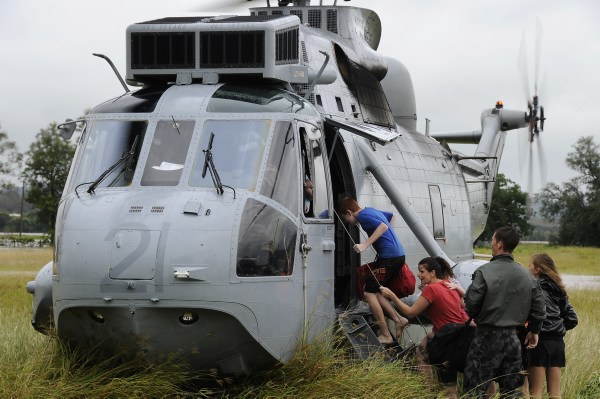 Photograph by: Petty Officer Damian Pawlenko, Australian Department of Defense
Photograph by: Petty Officer Damian Pawlenko, Australian Department of Defense
Australia and Climate Change: Time to Address the Root Cause and Prepare
Introduction
The deadly bushfires in Australia have brought renewed focus on the threat of climate change to Australia and other developed nations. Over 10 million acres are burning across some of the most populated regions in the country. Already the fires have destroyed over 1,500 homes and killed over 25 people. Similar to the U.S. response during hurricanes, Australia leveraged their military assets to assist with evacuations and firefighting.
Unfortunately, also similar to the U.S., the Australian government still considers climate change a partisan issue, stalling action. As extreme storms, droughts, and wildfires become the norm, the military in both countries will be responsible for an increasing number of humanitarian aid and disaster response missions. Both countries need to move past the partisan dialogue and focus on building resiliency and planning for the inevitable future.
Climate Change in Australia
Australia serves as an important case study and reminder that climate change doesn’t distinguish between less developed and developed nations. The past year was the hottest and driest year on record in Australia and the country is facing threats to their vital tourism industry due to coral reef die offs and sea level rise. About 85% of the population lives within 50 kilometers of the coast and coastal communities currently face significant damage from flooding. These threats will only increase in coming years. The good news is that Australia has a higher capacity to adapt to the effects of climate change than some of its neighbors.
Unfortunately, while it may have the capacity to adapt for now, the Australian government refuses to address the root cause, climate change. Australia is not one of the highest carbon emitters but it is the 2nd largest exporter of coal in the world and one of the largest exporters of coal, oil, and gas overall. The Australian economy is heavily dependent on the stability of coal exports for their continued economic growth and yet that resource is also causing harm to the secondary source of income, the natural environment. The continued dependence on fossil fuels will lead to worsening economic and security risks for Australia and the world.
Security Concerns
The effects of climate change will impact more than just the economy. Extreme weather, extreme drought, and rising seas threaten military infrastructure and undermine readiness. The submersion or destruction of installations is one of the most visceral impacts but the threat to readiness is equally concerning.
The military is often the organization most capable of the massive lift requirements that arise from severe natural disasters. Climate change is expanding that mission. In response to the current bushfires, Australia has already deployed 3,000 Army reservists along with aircraft and naval ships to assist with evacuations and firefighting. Similarly in 2018, the U.S. deployed over 10,000 troops in response to Hurricane Florence which led to diverted deployments abroad and cancellation of training exercises to focus on hurricane repair.
Conclusion
Whether preoccupied responding to fires or hurricanes, the deployment of troops for disaster response takes away from the continued vigilance to hard national security threats. In the last week, Australia announced a new round of evacuations while it continues to battle fires. The military and the government need to begin to prepare for the increased number of humanitarian and disaster response missions while bolstering installations to the changing environment.
It is time that the U.S. and Australia move completely past the partisan divide and recognize the threat of climate change to communities, the economy, and military preparedness and operations. Both countries should take action in lowering their reliance on the source of climate change and begin to build resilience to the existing risk. By avoiding action, they only delay the inevitable while risking readiness.





